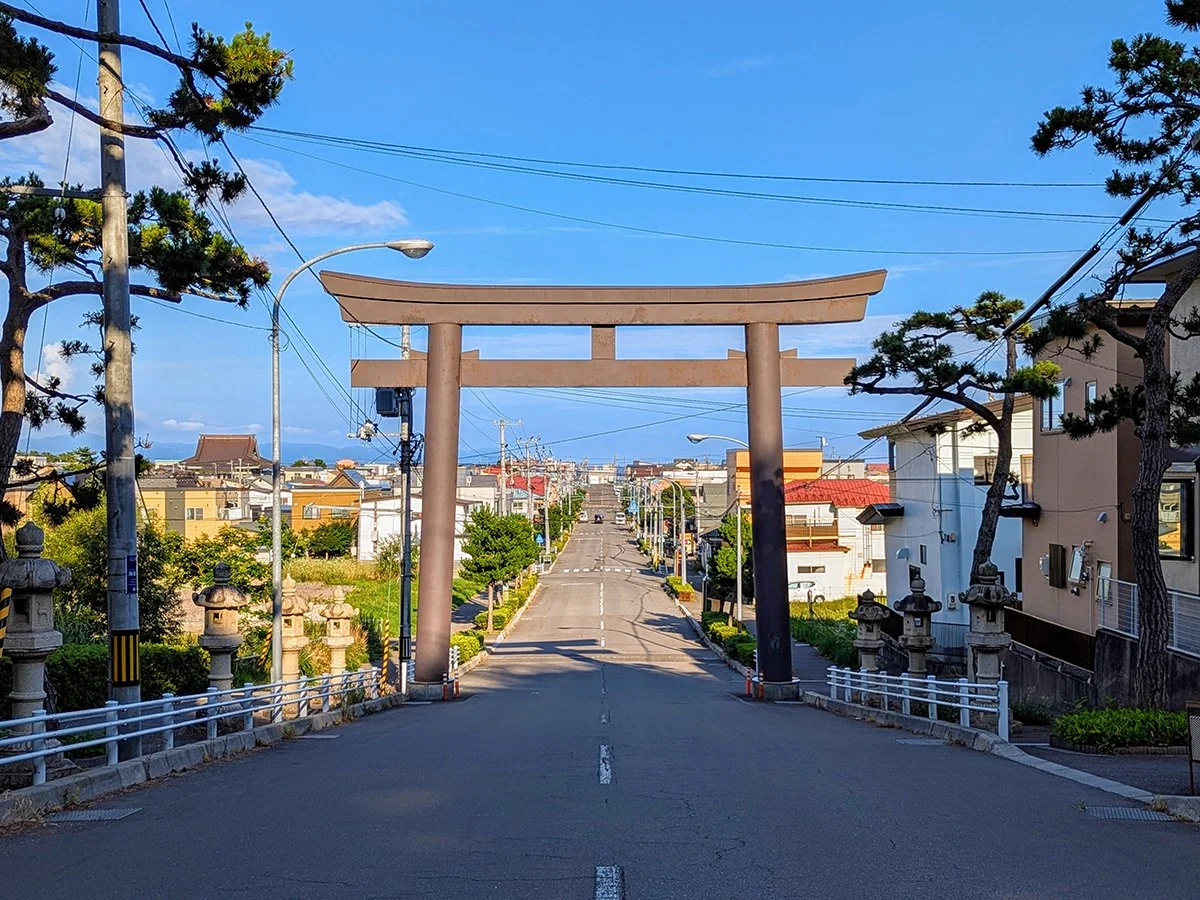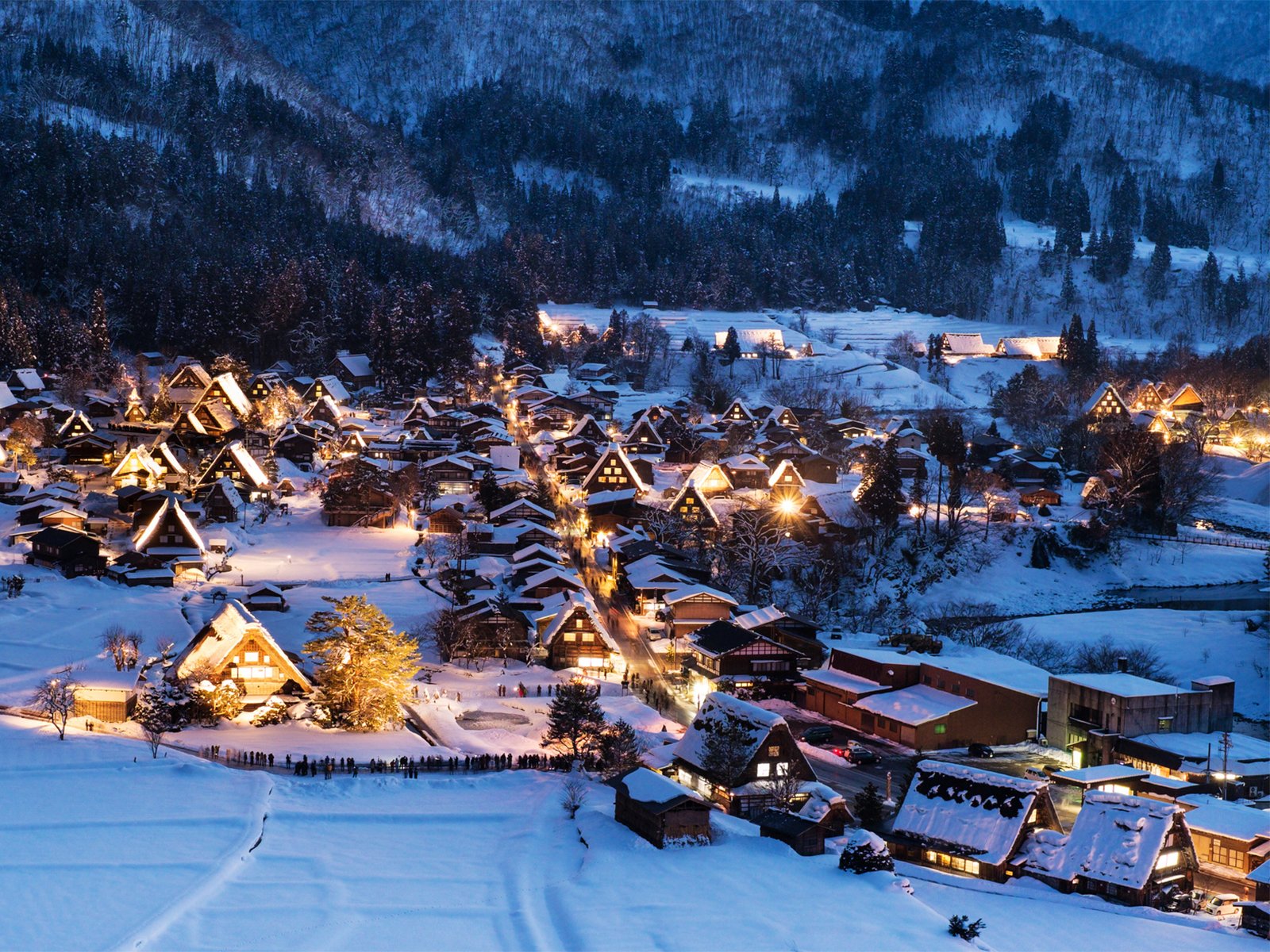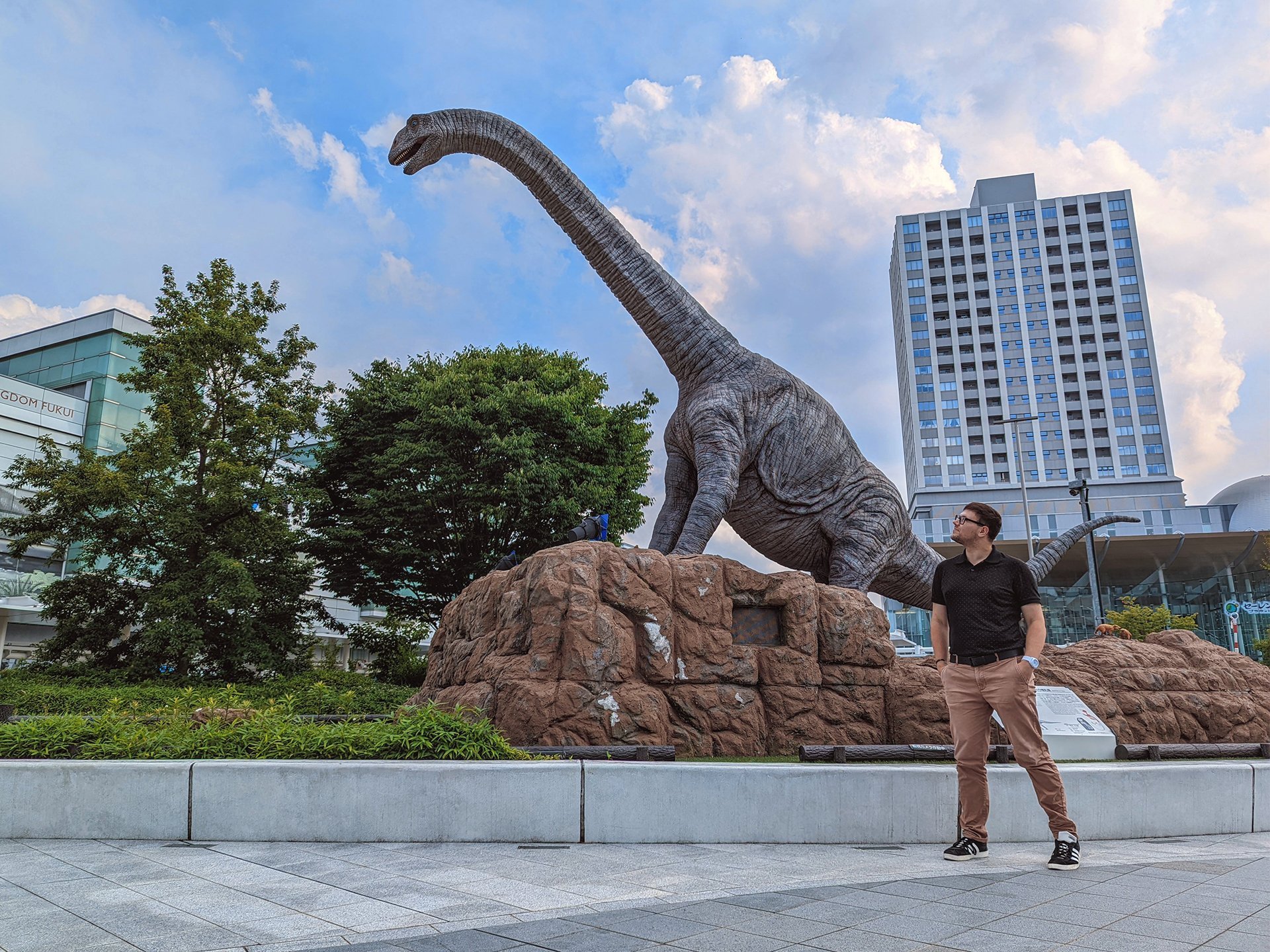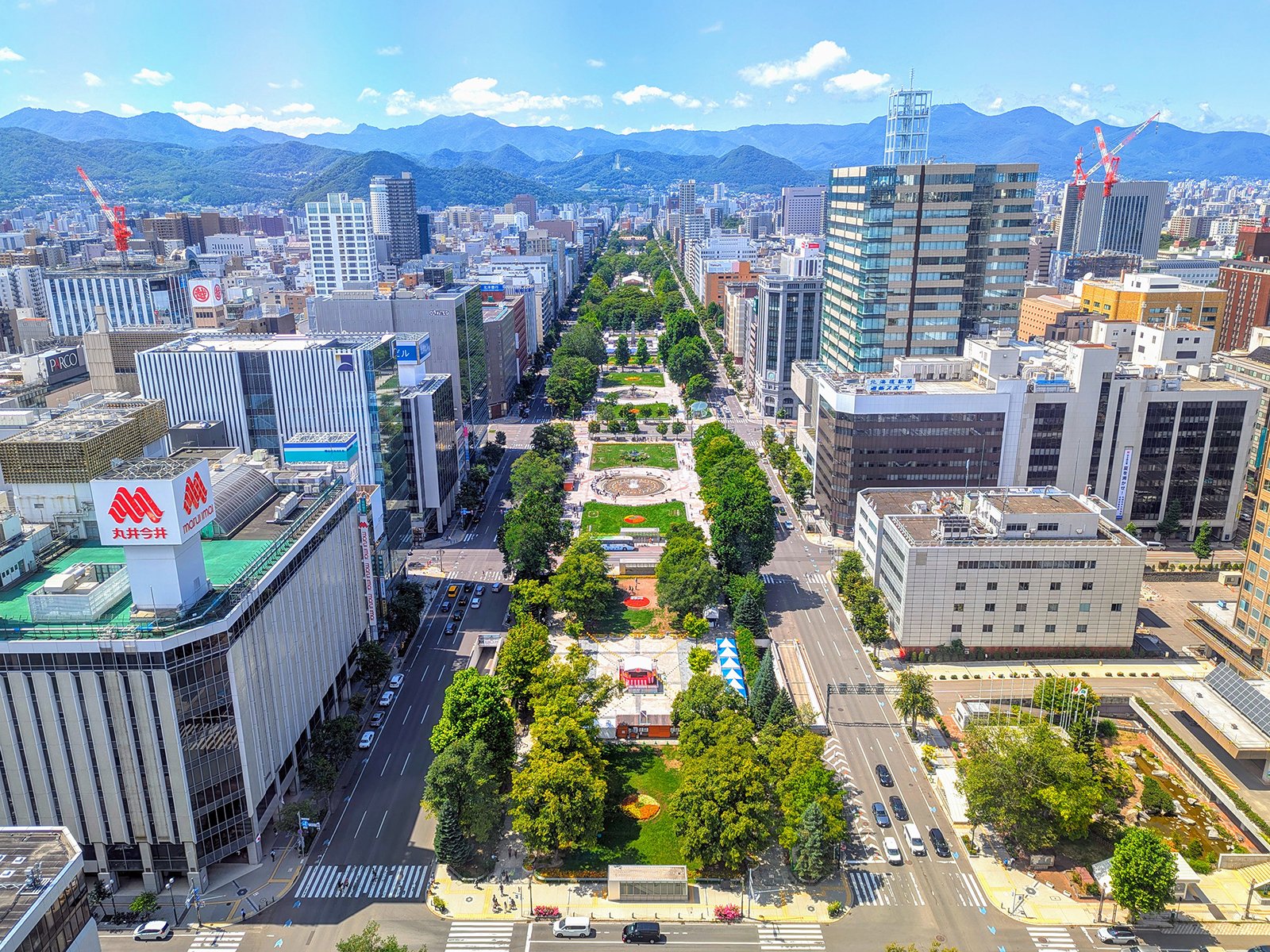Travel Guide: Hakodate

The historic harbor offers international architecture, scenic views, and squid.
Cover photo: View of Goryokaku (Star Fort) from Goryokaku Tower, Hakodate, Hokkaido, Japan (2024). Photo by Danny With Love.
Intro
Hakodate (hah-koh-dah-teh) is the historic port of entry to the island of Hokkaido, due to its proximity to Japan’s mainland Honshu. It was among the first Japanese ports opened to foreign trade at the end of the isolationist Edo Period. The city boasts an international atmosphere, scenic views, and delicious squid.
Hakodate’s architectural landmarks include churches, former consulate buildings, and iconic Goryokaku (Star Fort). The natural harbor is also famous for the beautiful view from Mount Hakodate.
Arriving by ferry from Aomori, I initially found Hakodate more industrial than charming, but my mood improved as I wandered Motomachi downtown. Coincidentally, the city was especially crowded this summer because it was the setting for Detective Conan: The Million-Dollar Pentagram (名探偵コナン 100万ドルの五稜星), the latest film in the popular children’s mystery series.
Overall, I enjoyed my visit to Hakodate. It’s quite similar to Kobe, but with Hokkaido’s superior climate and cuisine. I recommend it for history-lovers and architecture-enthusiasts. Please read on for more details and travel tips.
History
The city of Hakodate (函館) dates back to 1454, settled as a fishing village by the indigenous Ainu people, before Hokkaido was conquered by Japan. The Tokugawa Shogunate granted the northern Matsumae Clan exclusive trading rights with the Ainu in 1604 — beginning a slow process of colonization — and the shogunate took direct control of Hakodate in 1789.
Hakodate was one of Japan’s first ports opened to foreign trade resulting from the Treaty of Kanagawa, signed by U.S. Commodore Matthew Perry in 1854.
In 1934, the city suffered the Great Fire of Hakodate, among the worst in Japan’s history; 1,500 people died and 23,000 buildings were destroyed. Hakodate is now home to some 240,000 residents, making it the third-largest city in Hokkaido (after capital Sapporo and central Asahikawa).
Goryokaku (Star Fort)
Hakodate is best known for its landmark star-shaped fortress called Goryokaku (“Five-Point Fort”). Designed by Ayasaburo Takeda (武田 斐三郎), this is Japan’s first and only Western-style fortification.
Goryokaku was built at the command of the Tokugawa Shogunate, following Hakodate’s opening to foreign trade; the fort was meant to serve as the center of diplomacy in northern Japan. In 1869, it was the site of the final battle in the Boshin War, between retreating samurai loyal to the overthrown Tokugawa Shogunate and the imperial Meiji Government. The failed Ezo Republic was then annexed as Hokkaido (“Northern Sea Circuit”).
Visitors can walk around Goryokaku Park, visit the reconstructed Magistrate’s Office, admire the view from Goryokaku Tower, and even rent a rowboat! The park is most popular during sakura (cherry blossom) season in spring.
Mount Hakodate
Featuring Hakodate Bay to the left and the Tsugaru Strait to the right, the sight from Mount Hakodate is often hailed as one of Japan’s best night views. It’s certainly my favorite — possibly the best I’ve ever seen. The varied landscape of water, mountains, and city lights is beautiful.
I recommend arriving prior to sunset, both to enjoy the scenery in daylight and to beat the crowds. I suggest avoiding weekends, if possible. Visitors tend to stay at the main terrace for long into the night. I waited over an hour for the ropeway back down. The observation deck also has bus access.
Motomachi
Hakodate’s most scenic area is the neighborhood of Motomachi, the historic foreign district. Consulates were established here soon after Japan’s reopening in 1859. Highlights include the former British Consulate, Roman Catholic Church, and the Old Public Hall.
The British Consulate includes a small museum, quaint tea room, and rose garden — blooming from mid-June to mid-July. I especially recommend the Roman Catholic Church, which boasts an altar from the workshop of Italian craftsman Ferdinand Stuflesser. It’s said to have been personally donated by Pope Benedict XV.
Cuisine
The port city offers excellent seafood — best-known for squid — and other Hokkaido specialties, such as dairy, lamb, corn, potato, and melon. I also recommend a taste of soufflé cheesecake from local chain Petite Merveille.
Most notably, Hakodate is the likely birthplace of Japanese ramen, with evidence of Chinese predecessor “Nankin soba” in Hakodate dating back to 1884. Today, the city is famous for shio (salt-based) ramen.
Events
Cherry Blossom Season APRIL/MAY
Goryokaku Festival MAY
Hakodate Port Festival AUGUST
Hakodate Squid Festival SEPTEMBER/OCTOBER
Autumn Leaves Festival OCTOBER/NOVEMBER
Winter Illuminations DECEMBER - FEBRUARY
Transportation & Accommodation
By train, Hakodate is four hours away from Hokkaido’s capital Sapporo, as well as four hours from the national capital of Tokyo thanks to the Tohoku Shinkansen (bullet train). Hakodate is also served by Hakodate Airport (HKD / RJCH). The city is served by buses, trams, and taxis.
Most hotels are located between Hakodate Station and the foreign district downtown. I recommend staying closer to the station for convenience or closer to Motomachi for a more romantic atmosphere. One day is enough to see Hakodate’s top attractions, but I recommend two for a leisurely pace.
Top Attractions
Goryokaku (Star Fort) & Observation Tower
Mount Hakodate Ropeway (One of Japan’s Top Night Views)
Motomachi (Foreign District)
Hachiman-Zaka (Scenic Hill Street)
Kanemori Red Brick Warehouse (Shopping Center)
Hakodate Morning Market (Seafood)
Our Lady of the Angels Trappistine Abbey*
Cape Tachimachi (Natural Landmark)*
Hakodate City Museum of Northern Peoples (Ainu Culture)
Yumoto Hana no Yu (Hot Springs)*
Daimon Yokocho (Pub Alleyway)*
Lucky Pierrot (Local Hamburger Chain)*
*I have not visited these attractions.
Additional Ideas
Hakodate offers easy access to Onuma Quasi-National Park. Aomori, on Japan’s mainland of Honshu, is just to the south — about two hours by train or four by ferry. It’s most famous for the impressive Nebuta Festival in summer.





























